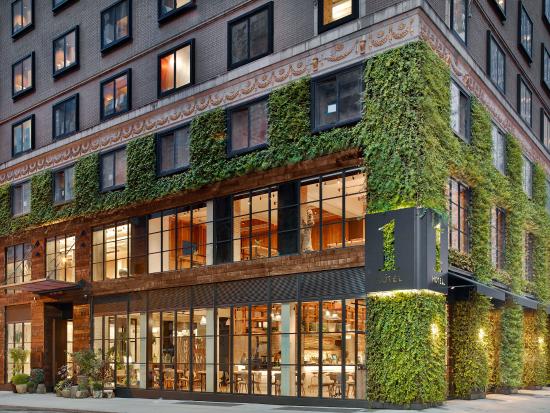
New York City’s wellness and nightlife scenes collide in surprising ways, and language reflects that tension. The phrase american body rub manhattan surfaces in casual chatter, signaling a boundary between standard spa services and something more intimate. This piece dives into the history, legality, and everyday reality of Manhattan’s wellness options, with an eye for safety and clarity.
What the phrase signals in New York’s urban culture
In conversations about the city, the term often acts as a shorthand for a spectrum of services that sit near the edge of formal spa culture. It hints at discretion, speed, and a mood that goes beyond the usual menu of massages. Yet the language is inherently slippery, because it blends legitimate therapeutic work with undertones of indulgence and risk.
Historically, New York’s massage scene has evolved through cycles of regulation and publicity, leaving certain phrases to drift in the background. The current vernacular can reflect both consumer curiosity and a desire for privacy in a crowded, loud city. When people mention it, they’re often testing boundaries—what’s allowed, what’s advertised, and what kind of experience they might encounter behind a closed door.
Understanding the legal landscape in Manhattan
The legal backdrop is clear in one sense: legitimate massage therapy is regulated, and licensed practitioners must meet professional standards. Prostitution, in contrast, remains illegal in New York, with enforcement leaning on local policing and state laws. Advertising that explicitly promises sexual services can raise red flags for authorities and business owners alike. That is why some establishments lean on coded language or marketing that emphasizes discretion rather than overt sexual connotations.
For visitors and locals, the safest path is to prioritize licensed, transparent spaces. Look for visible licenses, trained staff, and a straightforward pricing structure. If a place pressures you to accept services beyond the advertised menu or uses vague terms to dodge questions, that’s a sign to walk away. In Manhattan, legality and safety often walk hand in hand, especially in a sector that operates close to moral and regulatory gray areas.
How to spot legitimate spa experiences
A reputable spa or wellness center will make its standards easy to verify and easy to observe. Staff should be professional, boundaries clear, and rooms clean and well maintained. Clear communication about session length, modalities used, and pricing reduces confusion and helps you relax with confidence.
To protect your interests, prioritize establishments that publish licensing information, rate transparency, and a written policy on consent and draping. Customer reviews from trusted sources can reveal consistency in service and safety practices. Remember, the best experiences emphasize health, relaxation, and professional care above all.
| Indicators of legitimacy | What to check |
|---|---|
| Licensed therapists | Therapist credentials visible on-site or verifiable online |
| Upfront pricing | Clear, itemized rates; no pressure for unlisted services |
| Professional boundaries | Respect for standard massage protocols and consent |
| Facility standards | Clean, safe rooms; proper sanitation and privacy measures |
Safety tips for visitors
Set boundaries before you arrive and stick to the services you’ve agreed to. Don’t permit negotiations that push beyond the stated menu, and be wary of anyone pressuring for tips or private arrangements. Use legitimate payment methods and leave if anything feels off—your safety matters more than a one-off experience.
- Choose well-reviewed, licensed venues with transparent policies.
- Ask to see licensing or credentials and verify them online if possible.
- Avoid rooms or settings that seem rushed or improvised.
- Trust your instincts—if a place feels crooked, walk away and report concerns if appropriate.
Locals who frequent trusted spaces often build a personal routine around consistent staff, clear boundaries, and predictable outcomes. The advantage is not just relaxation but the confidence that the service is run ethically and legally, which in turn supports safer, more professional care.
A personal angle: urban tales and experiences
In researching the topic, I spoke with practitioners who describe a shared goal: help clients unwind through credible massage techniques, thoughtful communication, and a calm, respectful environment. The best sessions deliver real relief—less muscle tension, better sleep, and a refreshed sense of well-being after a long day amid Manhattan’s hustle. It’s striking how often the most memorable moments come not from secrecy but from genuine care and professional technique.
Neighborhood dynamics matter. In fast-paced districts like Midtown, clients often seek efficiency and simplicity, while nearby boutique spots in quieter corners invite longer, more immersive experiences. Across the boroughs, a common thread remains: trustworthy establishments prioritize safety, skill, and clarity, turning what could be a tense encounter into a restorative pause in a busy life.
Broader city context
Manhattan’s wellness economy is a mosaic of traditional spa rituals, modern therapy, and wellness-focused boutique experiences. The line between legitimate therapy and more intimate marketing is never far away, which is why a discerning approach pays off. When you know what to look for—credentials, transparency, and a calm environment—the city’s offerings can be surprisingly rewarding.
The city’s landscape also reminds us that abundance comes with responsibility. A healthy spa scene supports trained professionals, fair labor practices, and customers who value safety and consent. By choosing licensed providers and staying informed about local laws, readers can enjoy relaxation and recovery without stepping into unnecessary risk or ambiguity.
As you navigate the maze of options, keep in mind a simple, practical standard: prioritize care over secrecy, and legality over allure. The best experiences in Manhattan’s wellness world emerge when you treat yourself to quality, verified professionals who understand the body, the mind, and the city you’re moving through.